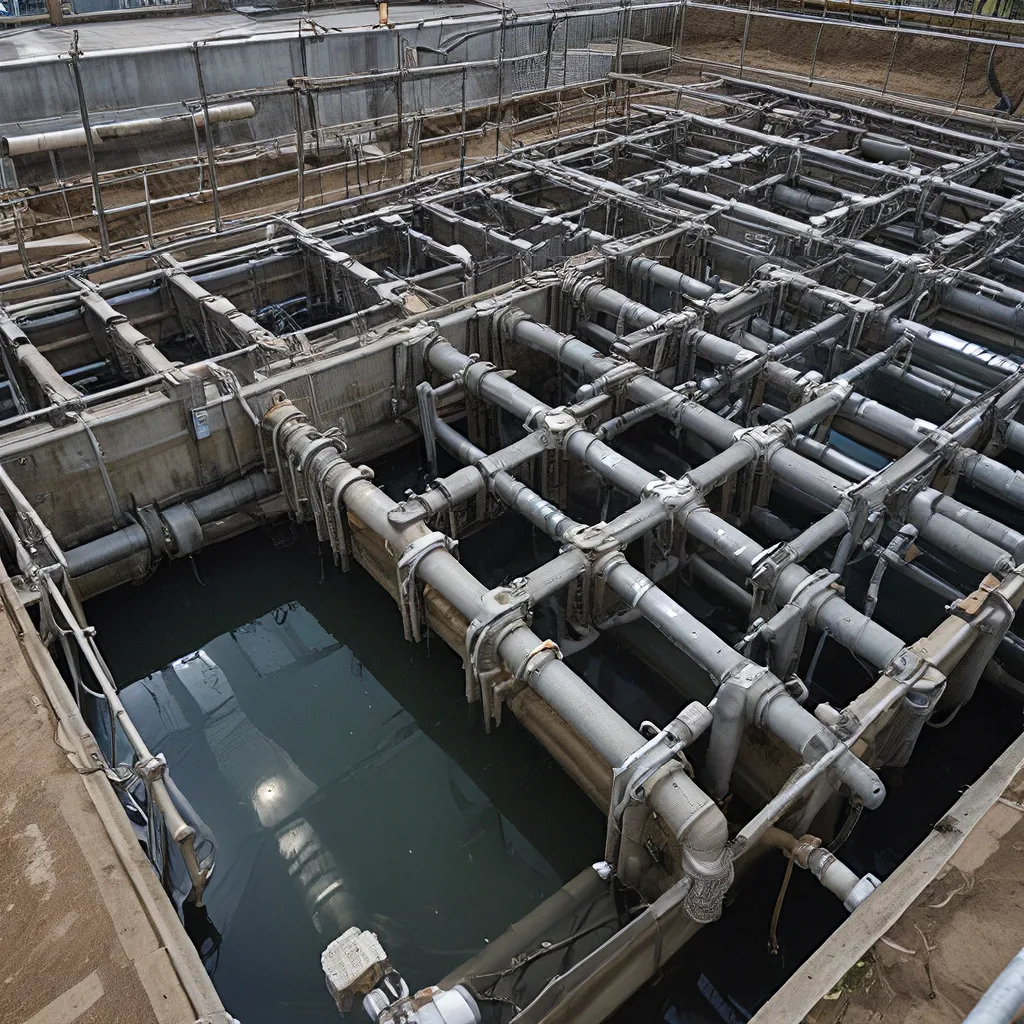
In the world of wastewater management, where the stakes are high and the challenges are ever-evolving, a new player has emerged – Artificial Intelligence (AI). This cutting-edge technology is poised to revolutionize the way we approach wastewater treatment, offering solutions that are not only more efficient but also more cost-effective.
As a seasoned professional in the wastewater industry, I’ve witnessed firsthand the constant struggle to keep up with the ever-increasing demands placed on our treatment systems. From maintaining a delicate balance of bacteria to ensuring compliance with stringent regulations, the job of a wastewater operator is one that demands a keen eye, quick reflexes, and a deep well of expertise. But what if I told you that AI could step in and take on some of these arduous tasks, freeing up time and resources for the human experts to focus on the bigger picture?
Identifying Filament Upsets with AI
One of the most common challenges faced by wastewater treatment plants (WWTPs) is the issue of filament upsets. These pesky bacteria and fungi can wreak havoc on the delicate balance of the treatment process, causing issues like foaming and sludge bulking that can have disastrous consequences if left unchecked.
But fear not, my friends, for AI is here to save the day! AI-powered testing platforms, like the one developed by the team at Alpha Wastewater, are trained on thousands of sludge images, allowing them to spot issues with human-level accuracy – but at computer-level speeds. This means that operators can quickly identify and address filament problems before they spiral out of control, optimizing the treatment process and ensuring the health of the plant’s delicate ecosystem.
Predicting Equipment Failures with AI and IoT
Another area where AI is making waves in the wastewater industry is in the realm of predictive maintenance. By integrating AI algorithms with the power of the Internet of Things (IoT), wastewater treatment plants can now monitor the performance of their equipment in real-time, detecting abnormal behavior and providing early warnings of potential failures.
Imagine a world where you never have to worry about a surprise equipment breakdown disrupting your operations. That’s the promise of AI and IoT in the wastewater industry. By analyzing data from a network of sensors, these technologies can identify patterns and trends that might not be visible to the human eye, allowing operators to schedule preventive maintenance and avoid costly downtime.
Forecasting Effluent Quality with AI
One of the most critical aspects of wastewater treatment is the quality of the effluent, or the water that is discharged back into the environment. Traditionally, this has been a challenging task, with operators relying on periodic sampling and lab analysis to get a snapshot of the plant’s performance.
But with the power of AI, that’s all about to change. Through the use of self-organizing fuzzy neural networks (SOFNN), AI can model and forecast the complex, nonlinear system of a WWTP, predicting effluent quality in real-time. This means that operators can make more informed decisions, optimizing their processes to meet stringent environmental regulations and ensure the safety of the surrounding ecosystem.
Empowering Operators with AI-Driven Insights
As if the technological advancements weren’t enough, AI is also proving to be a valuable asset in the day-to-day operations of a wastewater treatment plant. By automating the sampling and analysis process, AI-powered testing platforms can provide operators with real-time insights and recommendations, helping them understand what’s going on in the plant and what needs to be done.
Gone are the days of waiting days for lab results or struggling to interpret complex data. With AI, operators can access the information they need, when they need it, enabling them to make faster, more informed decisions that keep their plant running smoothly and efficiently.
Uncovering Hidden Insights with AI and Big Data
But the benefits of AI in wastewater treatment don’t stop there. This powerful technology is also proving to be a game-changer when it comes to data analysis and optimization.
Wastewater treatment plants generate a vast amount of data from various sensors and instruments, both on the influent and effluent streams. Unfortunately, many plants struggle to make sense of this data, often relying on expensive data scientists and experts to sift through the information.
Enter AI. By leveraging machine learning algorithms, AI can extract, process, and analyze this data, uncovering hidden patterns and insights that can lead to significant operational cost savings and predictive maintenance strategies. This is particularly crucial in an era of strict emission restrictions and increased regulations around energy efficiency and resource recycling.
The Future of Wastewater Treatment with AI and IoT
As I look to the future of the wastewater industry, I can’t help but be excited about the endless possibilities that AI and IoT hold. These technologies are not just fancy toys; they have the power to transform the way we approach wastewater treatment, making it more efficient, more sustainable, and more cost-effective.
Imagine a world where AI-driven optimization algorithms continuously fine-tune the treatment process, adjusting chemical dosing and energy usage to achieve maximum efficiency. Or a future where IoT-connected sensors and smart actuators work in tandem to detect and address issues in real-time, without the need for human intervention.
While the integration of these technologies is not without its challenges – from legacy system integration to data governance and privacy concerns – the potential benefits far outweigh the obstacles. And as the industry continues to evolve, I’m confident that we’ll see more and more wastewater treatment plants embracing the power of AI and IoT to improve their operations, reduce their environmental impact, and better serve their communities.
So, my friends, the future of wastewater treatment is bright, and it’s all thanks to the rise of Artificial Intelligence. Who would have thought that our industry could be transformed by a few lines of code and some clever algorithms? But here we are, on the cusp of a technological revolution that is poised to change the game forever.